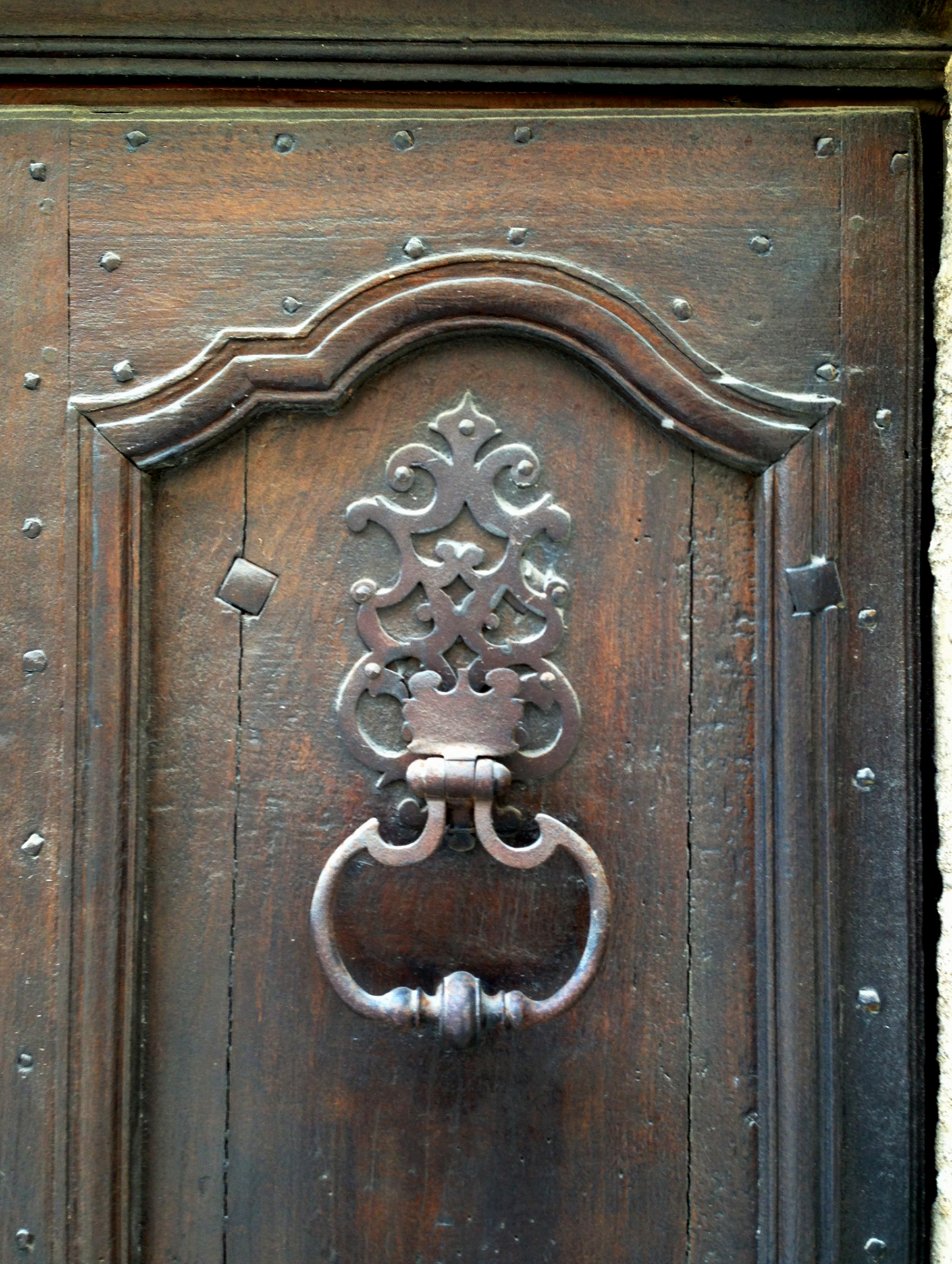About a month ago, I visited an old Modesto acquaintance. I had not been to her house for many, many years and I noticed the knocker on her front door: the classic “main baguée” which is one of the traditional designs commonly seen in France, especially in the southwest. Funny: I have one on my front door. Of course, our house was equipped with a doorbell when we bought it in 1991 but the iron hand traveled in my suitcase twenty years ago –along with a few cans of pâté– and Rick promptly mounted it onto our front door. Kids love it at Halloween: they’d much rather announce their arrival with the knocker than by using the more pedestrian doorbell.
Perhaps the most basic one of the bunch?
The first door knockers were simple iron rings attached to bronze heads: they could be grabbed and pulled to close the door. Many of them were designed with a thicker part in the middle (or a ball) so they could hit the head of a fat nail also applied to the door, and preserve the wood. This style of heurtoir was commonly found on the doors of churches during medieval times: knocking on the door would get you entrance into a lieu d’asile. In fact, merely holding the ring would grant you sanctuary, even if you were a suspected criminal or a witch (yes, time to read The Huntchback of Notre-Dame again.)
Hammer-style door knocker. Looks pretty old...
Another hammer-style door knocker
A more ornate hammer-style knocker
Early designs for private homes were simple in shape, like little hammers. During the Renaissance and later times, door knockers became more ornate, intricate, and identified as status symbols of the house occupants. Blacksmiths and engravers designed, shaped, and carved utilitarian objects that were true works of art in iron, bronze, brass or cast iron; some so coveted that they were stolen from their doors.
The buckle style door knocker became very popular in the 18th century
A contemporary example
A light, elegant version
A few hotels particuliers , especially in Le Marais, still show spectacular examples of superb craftsmanship applied to an utmost utilitarian object.
Rue Saint Denis
Rue Charlot
Lots of great doors, and knockers, on rue Charlot
During the 19th century, industrial production replaced artisanal workmanship, although it often copied earlier models. Interestingly enough, door knockers are still perceived as decorative and functional objects: in France, at least, they happily cohabit with modern doorbells. I took most of those photographs in Gourdon where I bought my door knocker at the local hardware store for a few bucks. Although “my” hand is not an antique, it keeps me in touch (pun intended) with the old country.
A bird, a woodpecker, perhaps?
A dog, I think
A fish
The hand (right or left) can wear a ring, or not, and on different fingers. It may hold a ball, or an apple, or not. The style of the cuff varies.
My hand, all decked out for Christmas
A good door knocker will dress up any ordinary door
Vocabulary
La main baguée: a hand wearing a ring
Le pâté: seasoned ground meat (pork, duck, rabbit…) usually sterilized and served cold accompanied by bread
Le heurtoir: door knocker
Le lieu d’asile: a place (usually a church) that offers asylum, sanctuary
L’hôtel particulier (m): private mansion

















